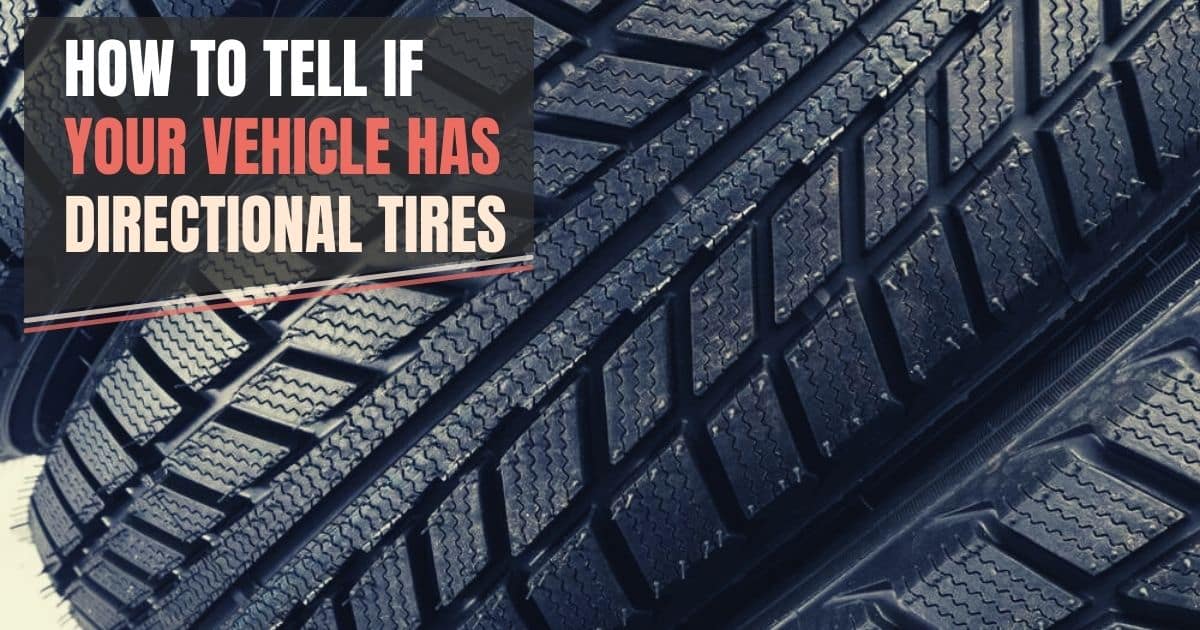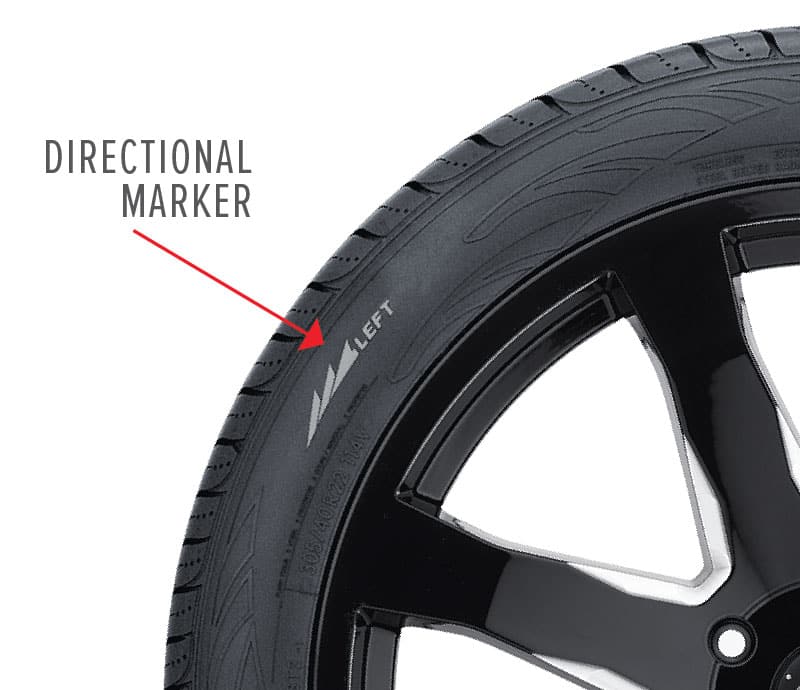If you have recently bought tires or if you are looking to get some new tires, you may find yourself wondering if they are directional. This can be confusing if you don’t know what you are looking for or what to spot. Telling the difference between tires that are directional and those that aren’t isn’t that hard though. Here we have put together a guide that should help you to tell whether or not you have directional tires.
What are Directional Tires?
These tires have a special tread pattern. It is designed to go in only one direction. The direction on the tread is normally a V or Y shape. This, when compared to other normal tires such as symmetrical or asymmetrical tires that are designed to go in different directions.

Symetric vs Asymetric vs Directional Tread Patterns
They Require More Effortt to Do a Tire Rotation Correctly…
Directional tires can’t be rotated to the other side of the vehicle. If they were to be moved facing the incorrect direction, it would impact performance. It wouldn’t be a case of just moving them to the other side of the vehicle, they would have to be remounted and dismantled to be in the correct position. So a full four wheel roation of these tires requires more effort.
Other types of tires are symmetric or asymmetric. These can be swapped, rotated and moved around the vehicle to any side without it being an issue. Keep in mind that a directional tire can’t be used as a spare tire. If you did have an emergency you wouldn’t be able to safely use it to replace 3 of your tire positions.
The Benefits…
The main reason that people choose to opt for directional tires is that they are better for high speed and performance cars.
There are many benefits to directional tires. They are good for people that live in a wet climate or in poor terrain as they have great traction on the road. They can easily grip the at in wet terrain like snow, mud, and wet tarmac. If there is water in the road they move this away more effeciently which ensures they don’t hydroplane. If you’ve had winter tires before, you might have noticed they are directional. That is by design in order to protect you.
While they can be more expensive than regular tires, in the long term, you can actually save money. This is because you will have an improved fuel efficiency. The reason for this is that they have less resistance to rolling and when they are in bad weather conditions. They simply channel the water away so your car doesn’t have to work as hard.
Directional tires also provide more stability when driving at high speeds . Many people also like them because they are quieter on the road. Lastly the tires also have a more sleek aesthetic to them. Many people like their attractive appearance that makes the car look sleeker.
How to Tell If You Have Directional Tires
If you are wondering whether or not the tires that are on your car are directional, there is a quick way to check.
The main thing you need to do is look at the sidewall of the tire. See if you have an arrow on your tire that points towards the front of the car. This can indicate that your tire is directional.
Another way that you can tell, is if you can see the words “this side out”on the tire. That indicates the tire has to be a specific way) this will only be found on a directional tire.
Installing Directional Tires
Make sure when installing tires that are directional you always follow the direction that is stipulated on the sidewall. If they are mounted the wrong way then the tire will have the opposite effect. It won’t be able to hold the road well and there is a greater chance of hydroplaning if you are driving in poor, wet conditions. Mounting the tires in the wrong direction can be super dangerous! Tires that aren’t installed incorrectly can also wear down much faster meaning you will need to replace them sooner, costing you money and also wasting your time.
Directional Tires Conclusion
Figuring out if your tires are directional is easy as looking at the sidewall. There are many beenfits to these kinds of tires such as improved performance in wet conditions and at hgher speeds. If you want to get all of the benefits and safety features from them, it’s critcal when mounting these kinds of tires that they face the correct direction.

